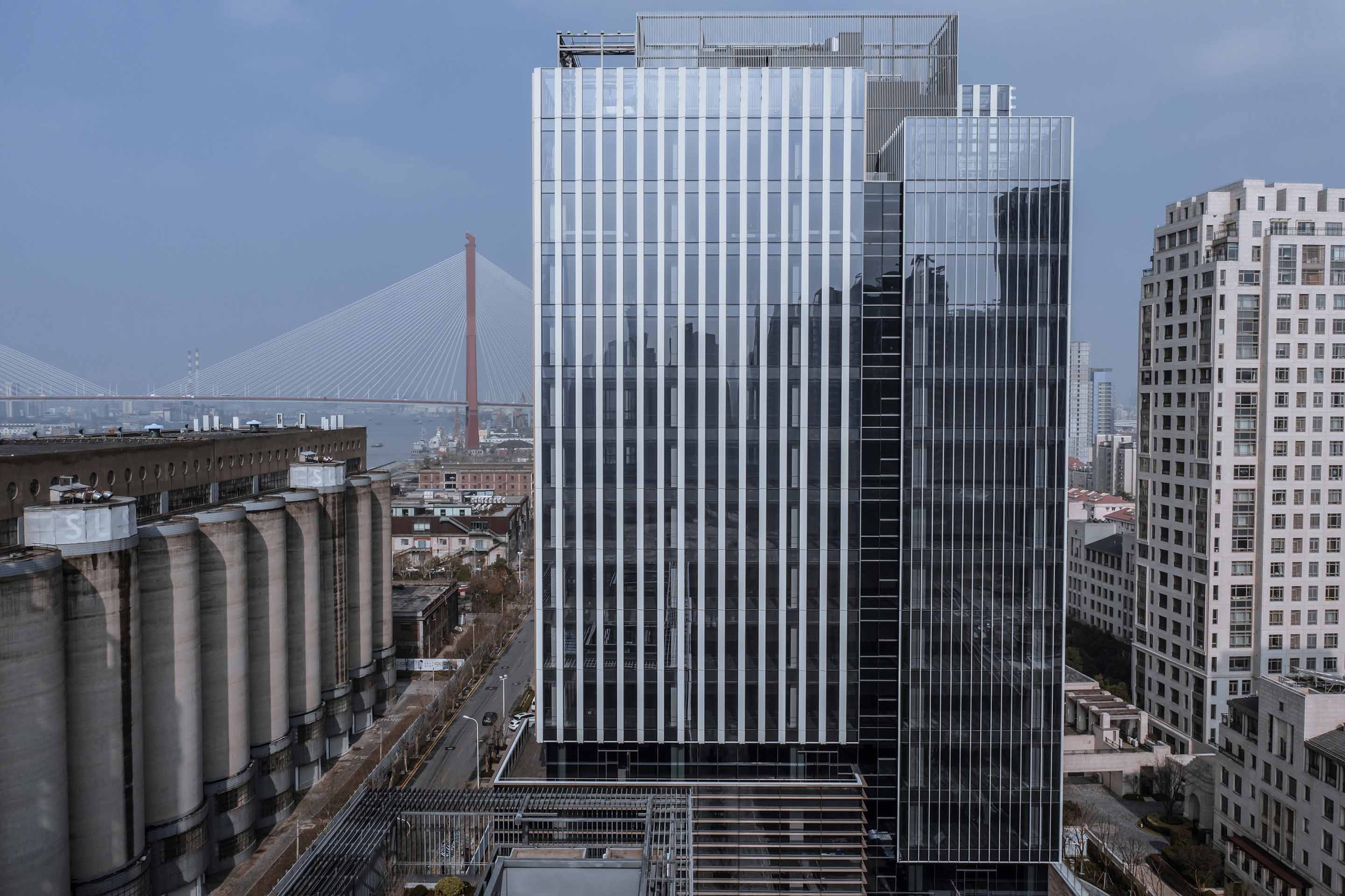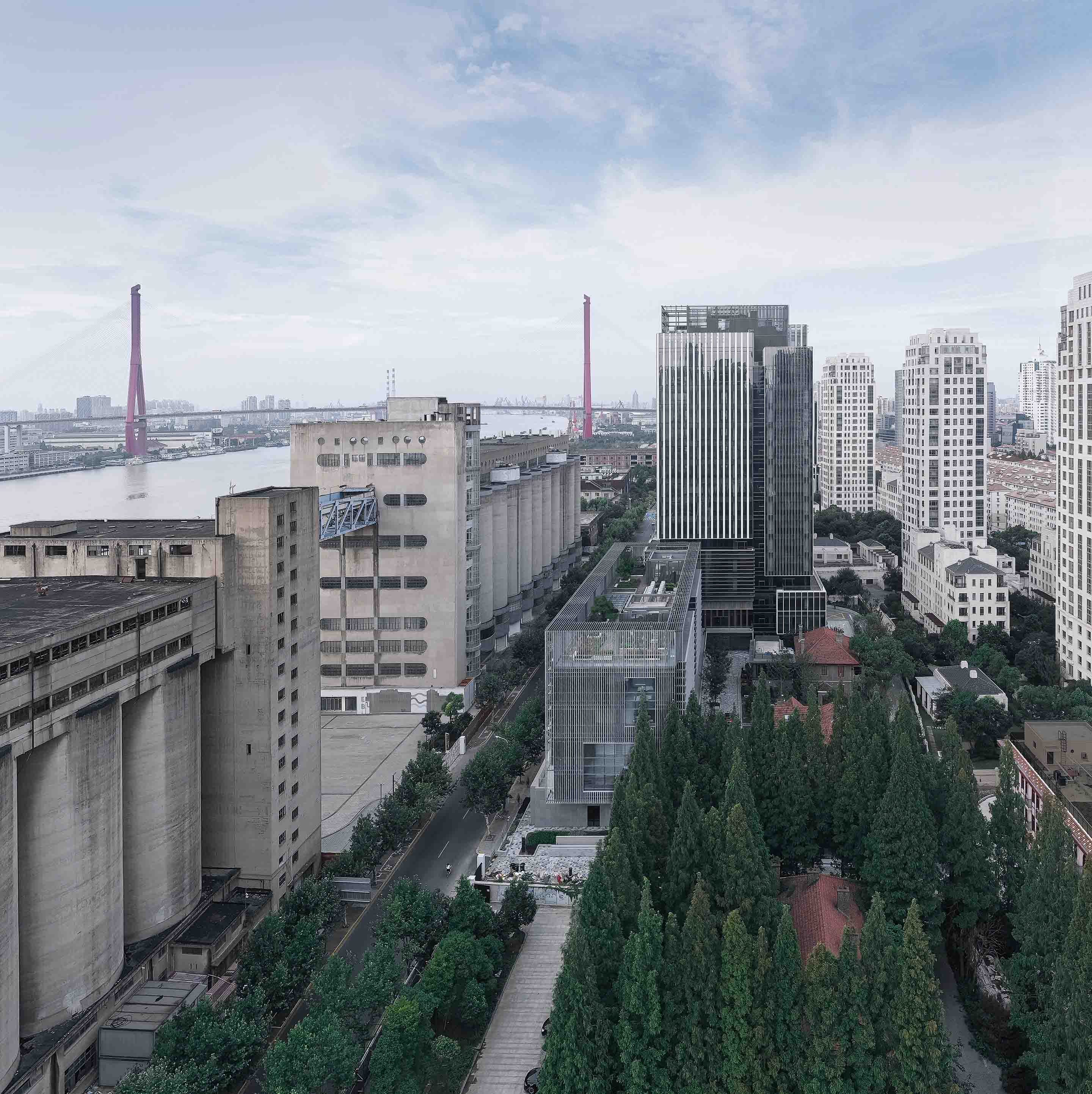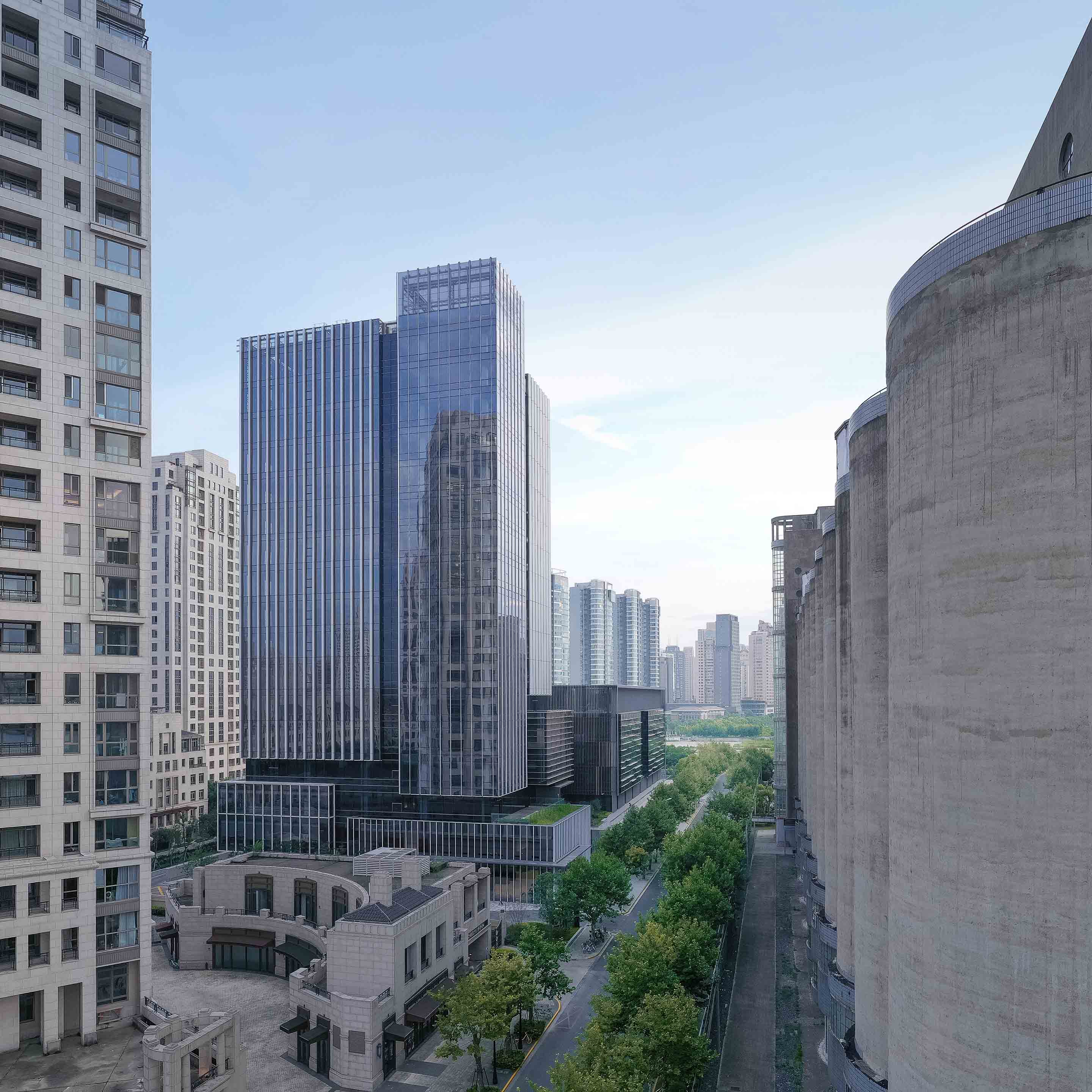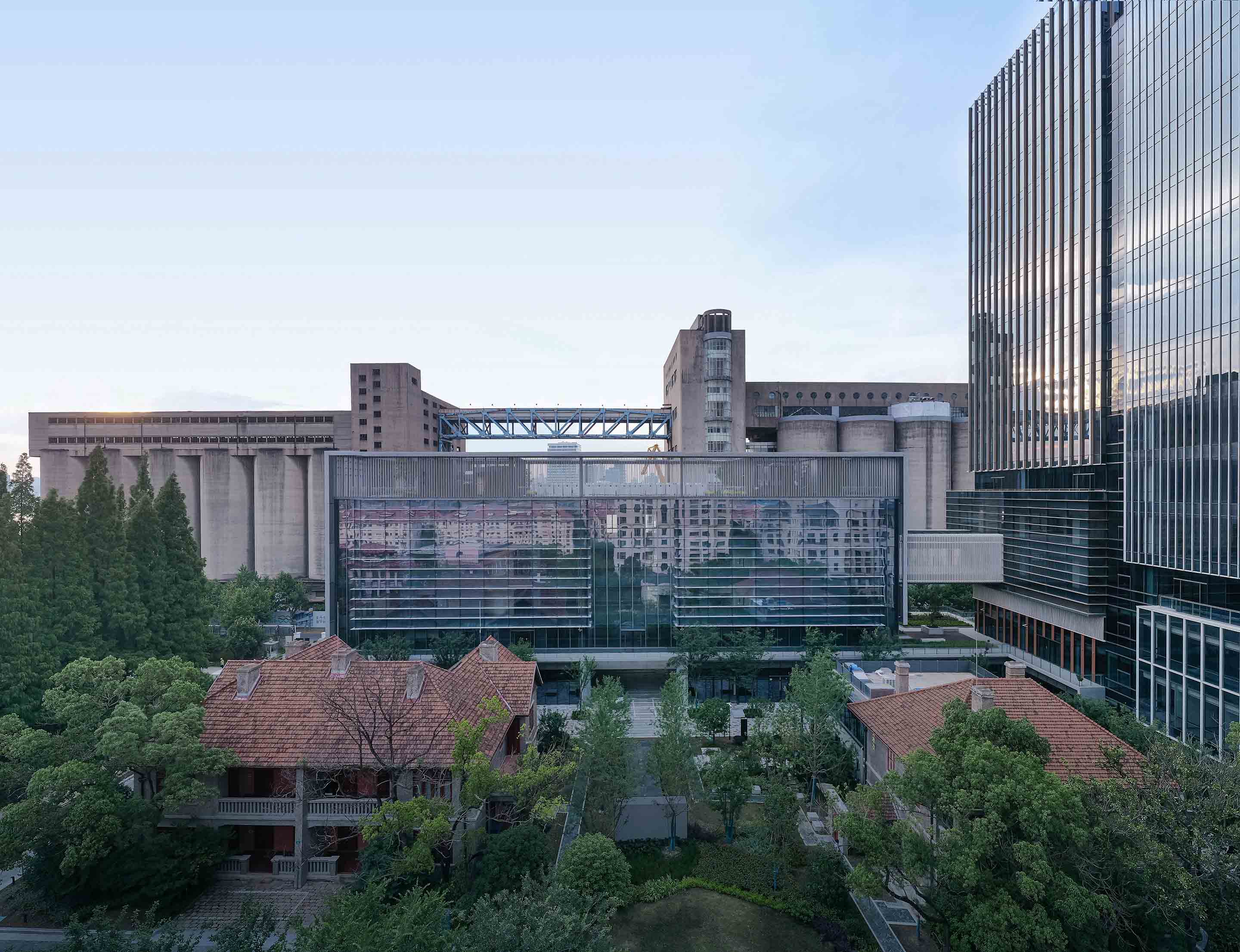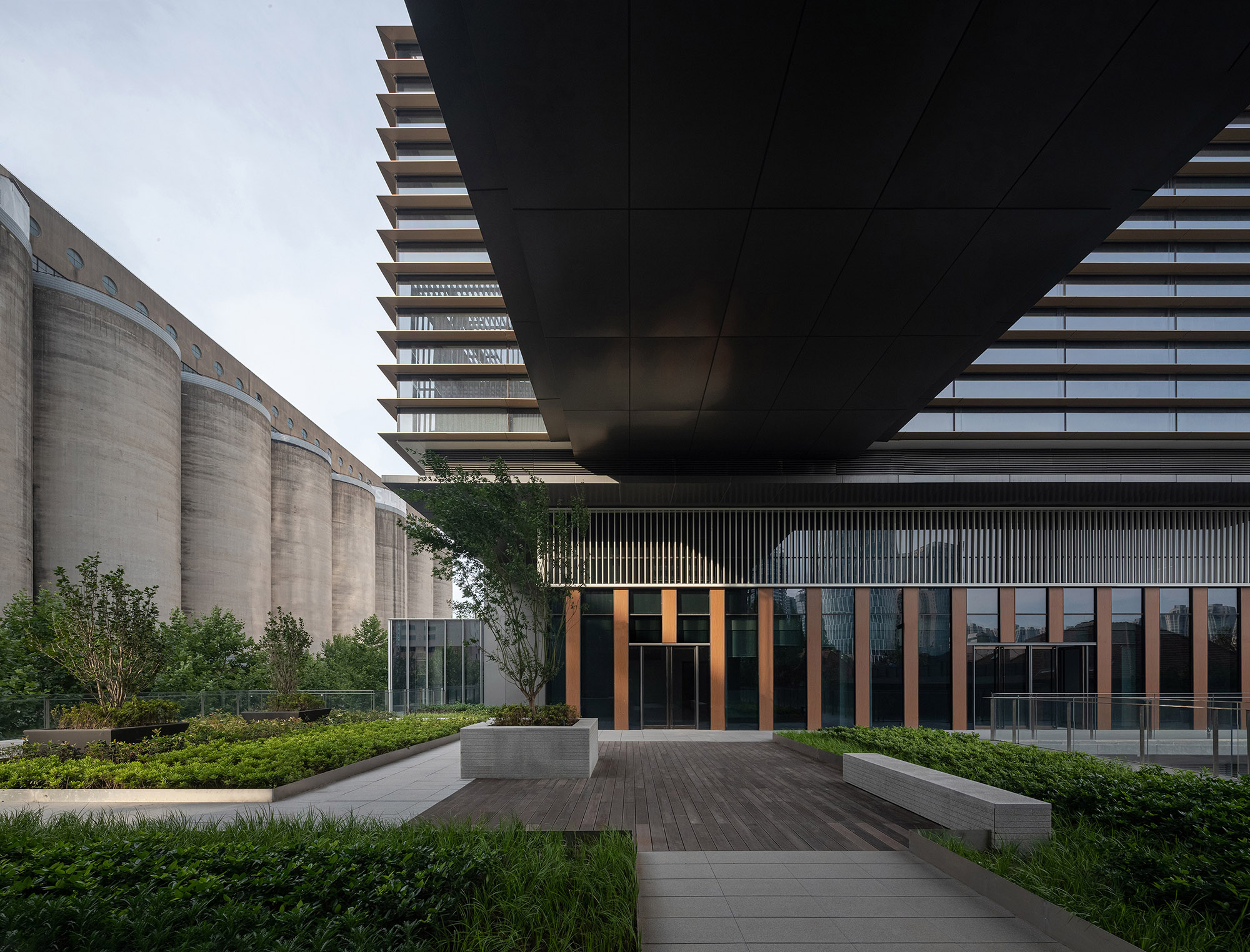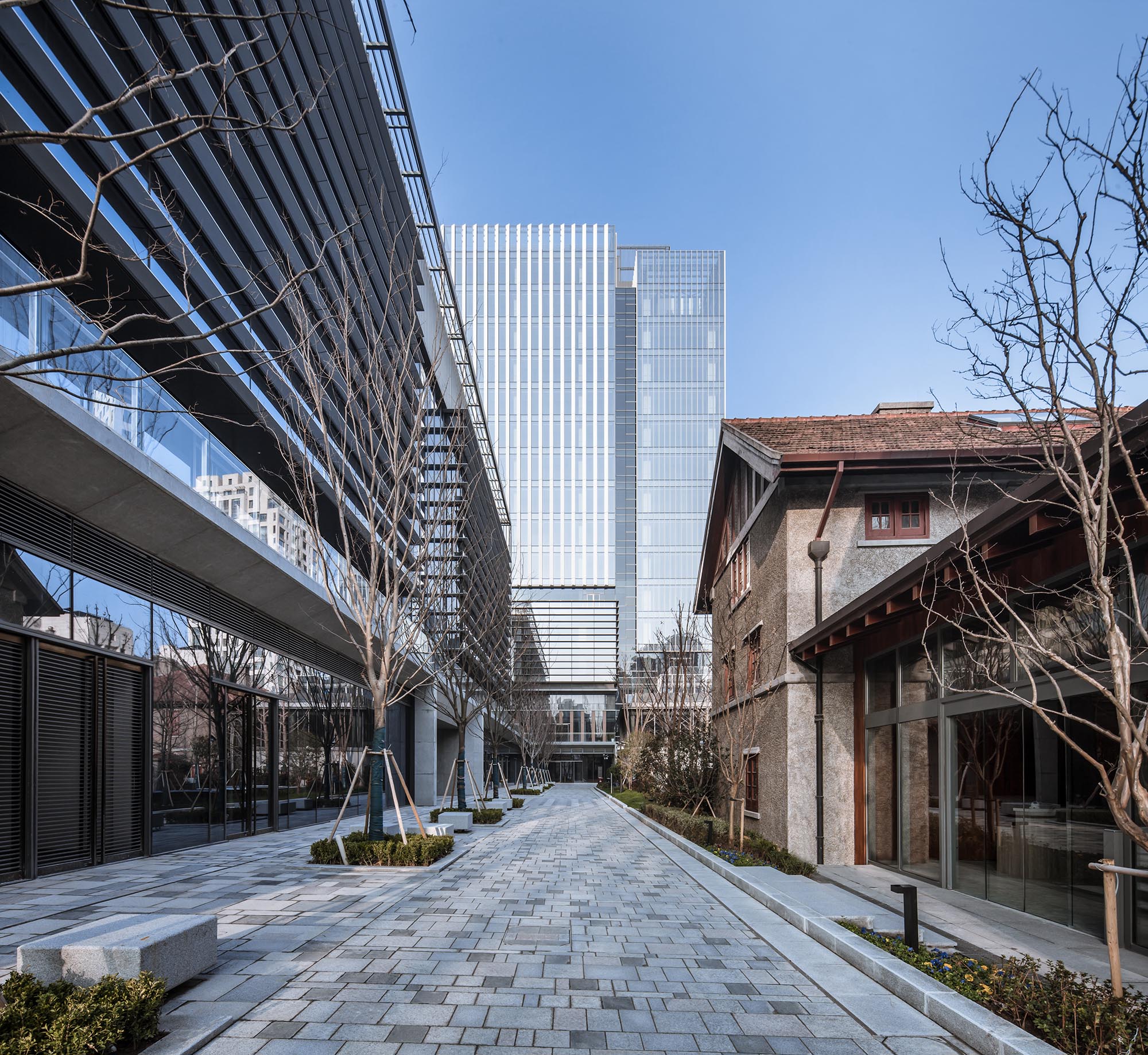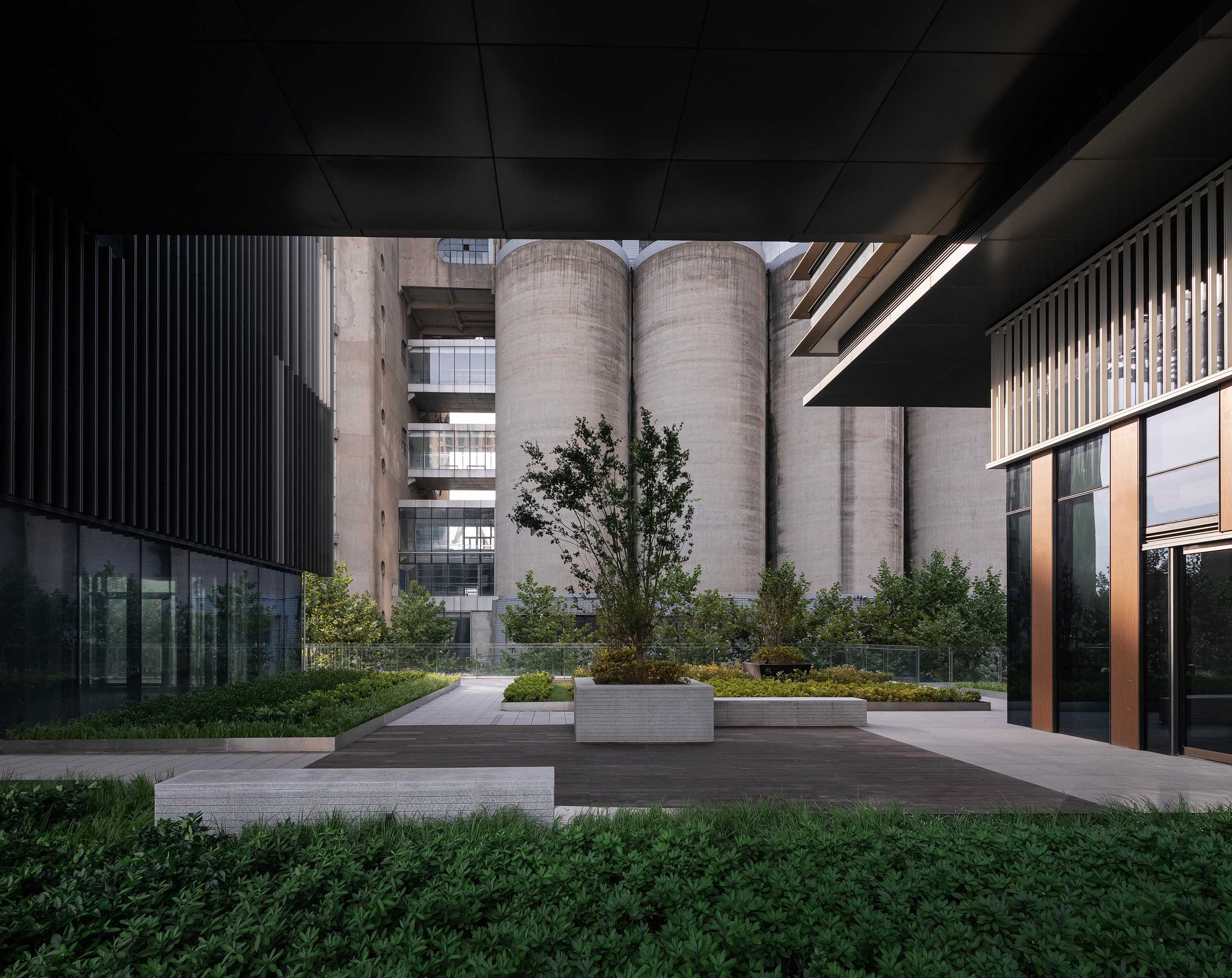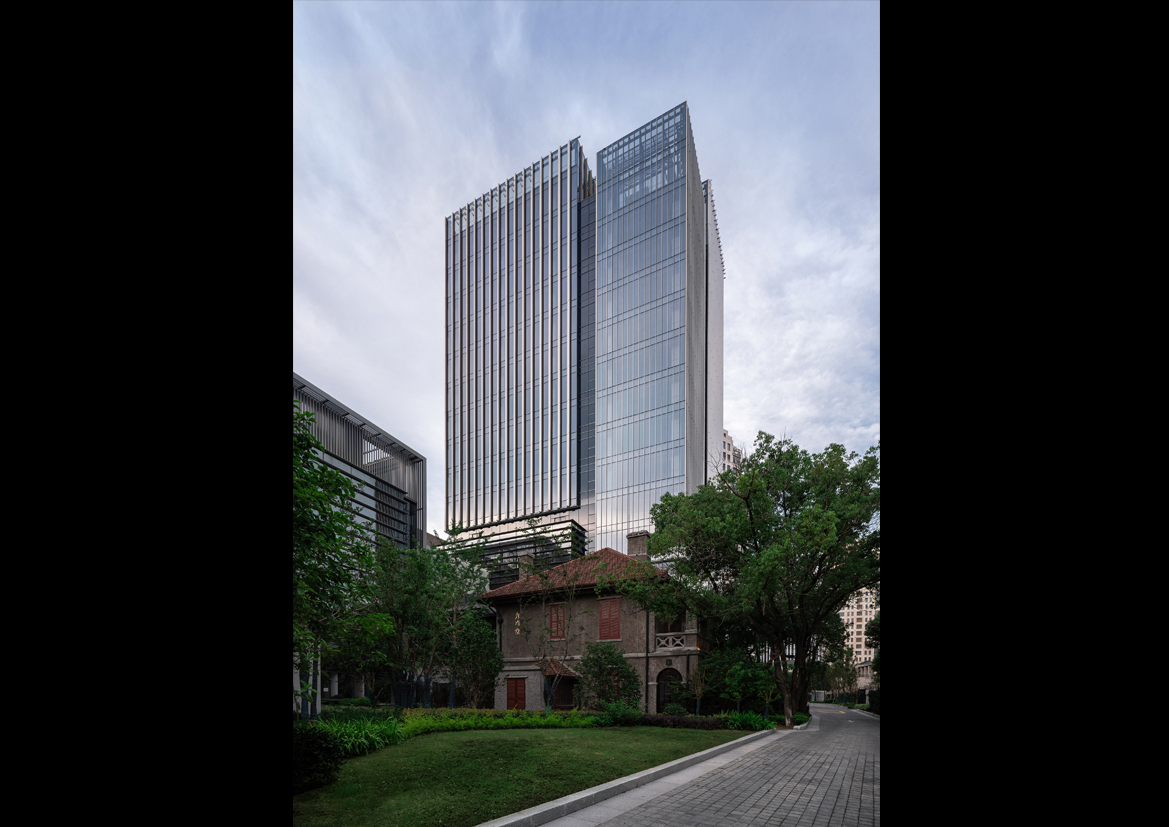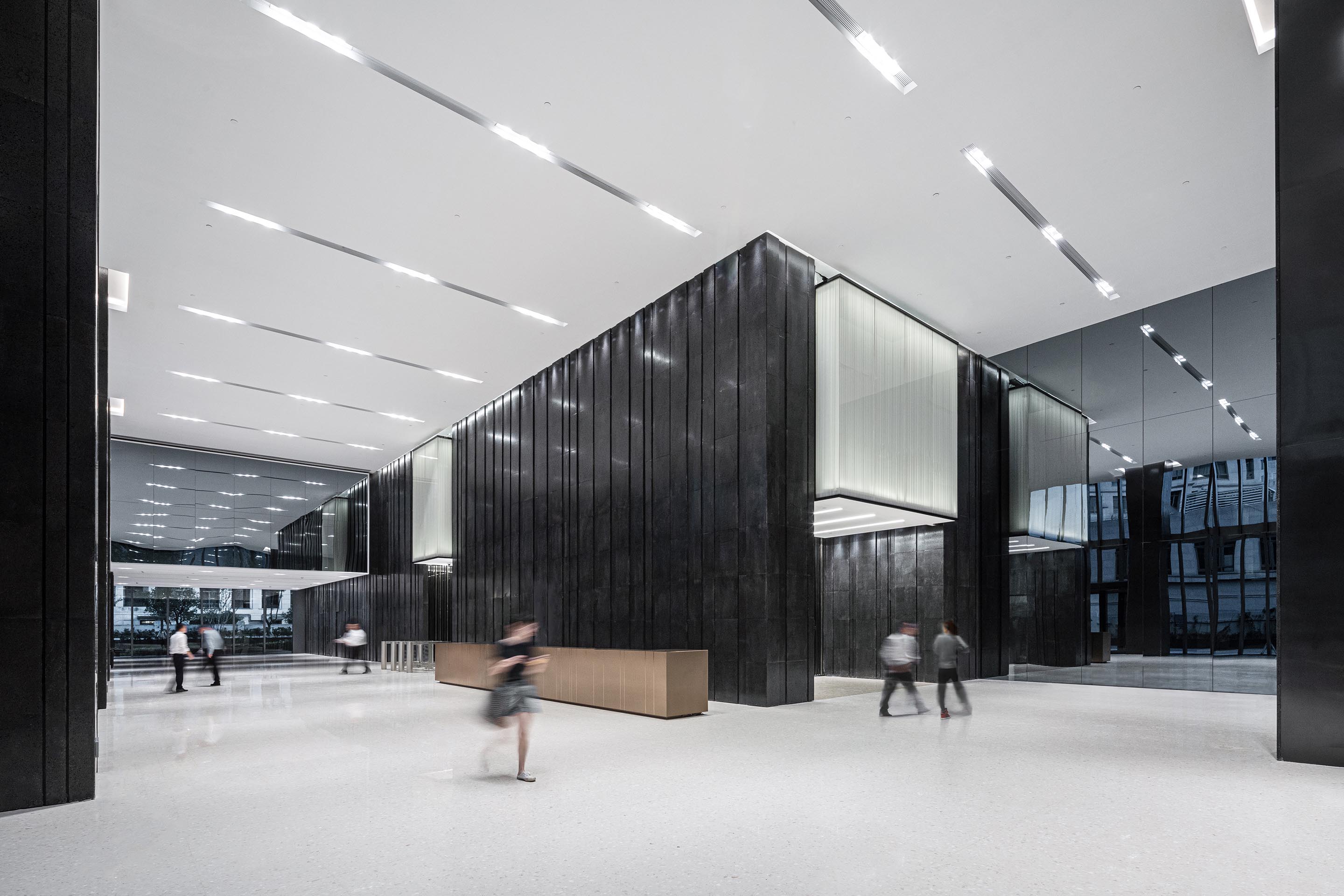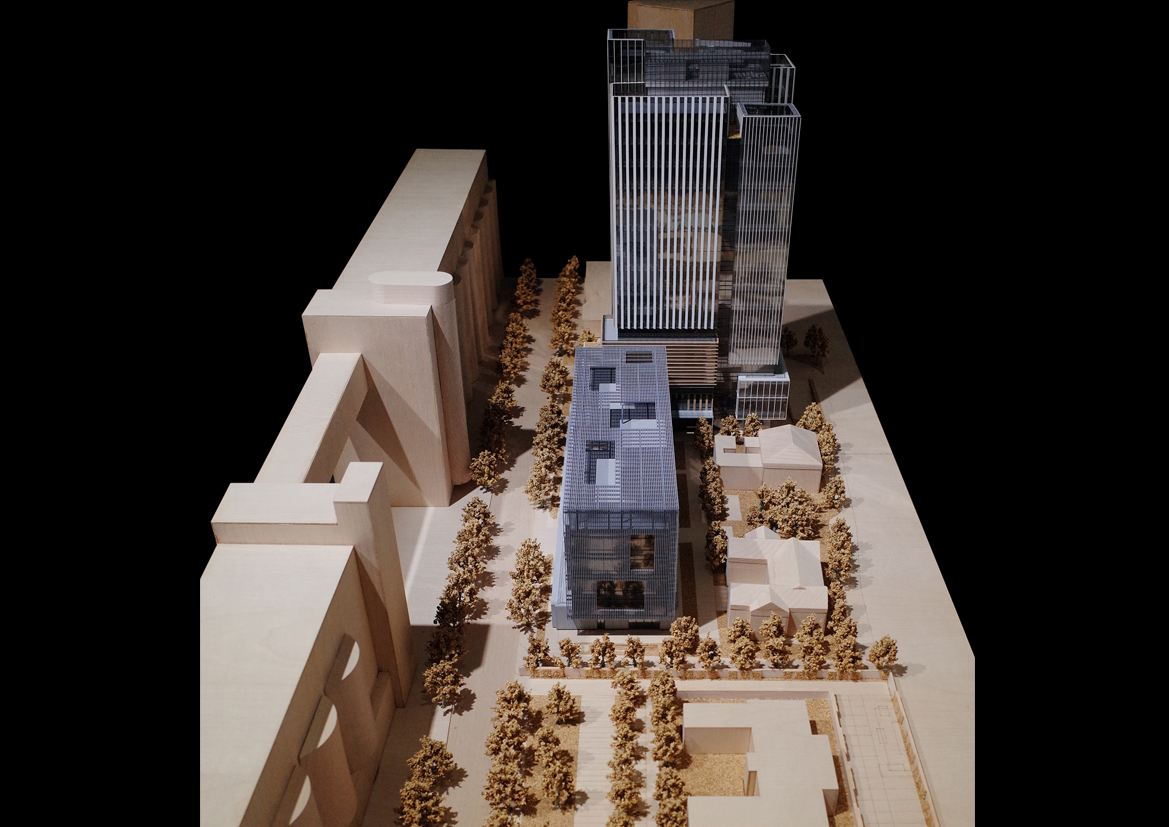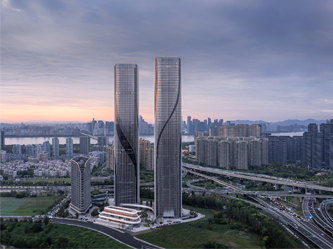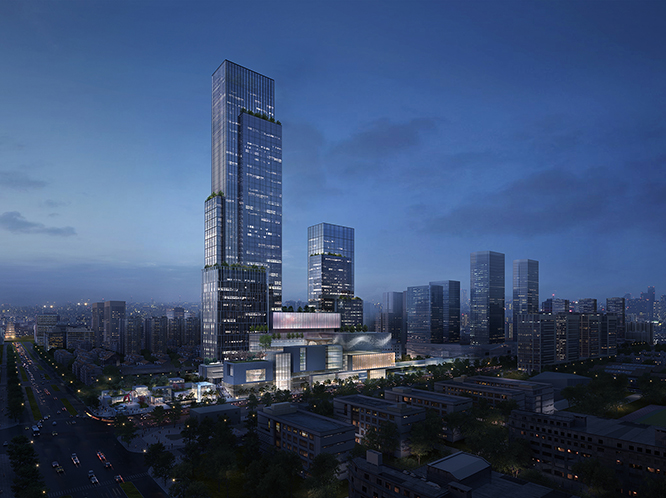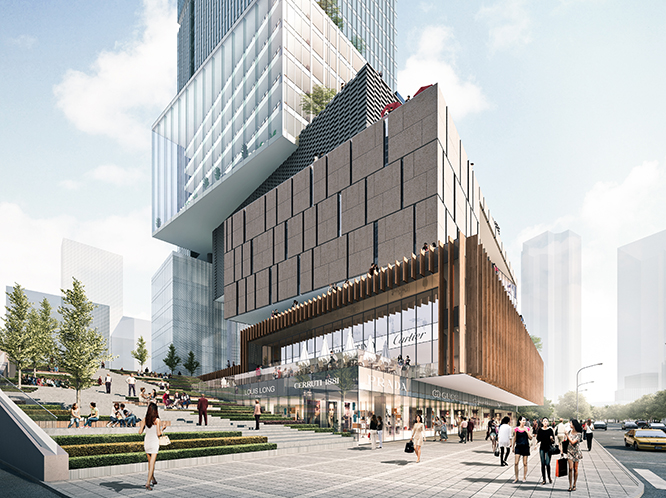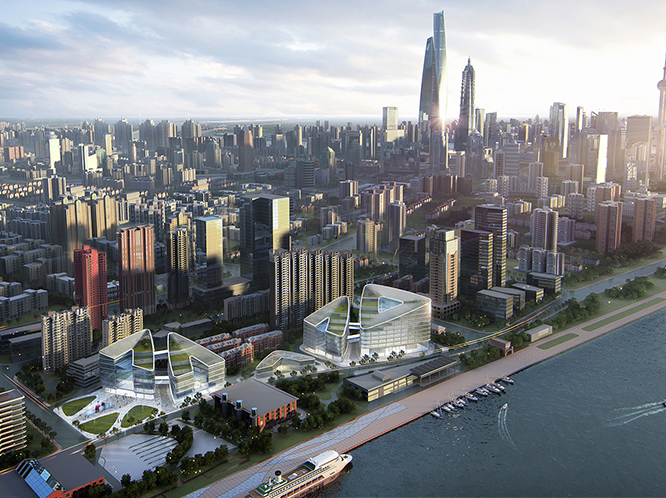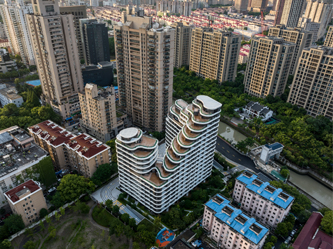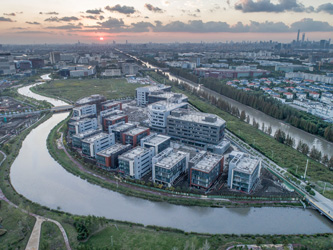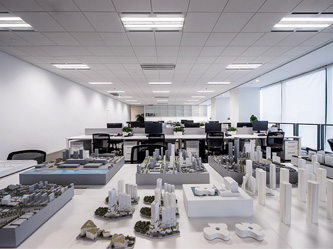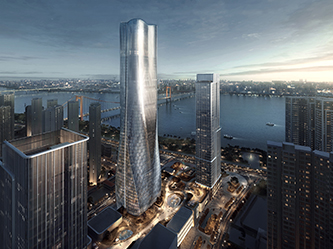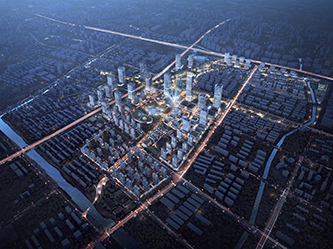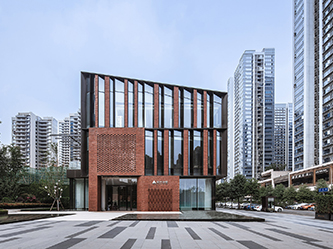
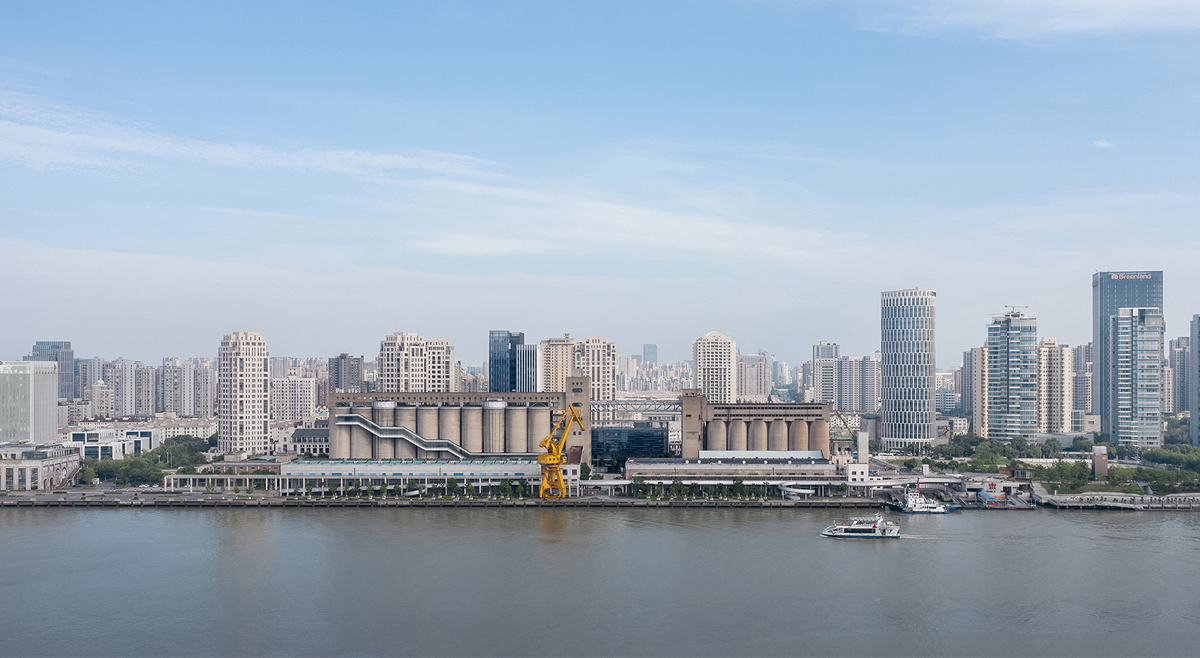
Location: Shanghai, China
Design Principal: Ping Jiang, FAIA
Client: China Enterprise Co., Ltd. / Shanghai Real Estate (Group) Co. Ltd.
Time: 2015-2021
Gross Floor Area: 38,240 sq m
Type: Urban Renewal,Office, Commercial
Technical Director: Sean Lu
Consultants:
Curtain Wall Consultant: Inhabit Group
Landscape Consultant: H & A Landscape / LAN·G.
Interior Consultant: DU Studio
Signage Consultant: Selbert Perkins Design
Lighting Consultant: LEOX Design Partnership
BIM Consultant: China Shanghai Architectural Design & Research Institute Co.,Ltd
Historic Building Preservation: Arcplus Historic Building Preservation Design Institute
LDI: Shanghai TIANHUA Architecture Planning & Engineering Ltd.
Located at Minsheng Wharf in Pudong of Shanghai, Minsheng Wharf Block E15-3 is a new waterfront development intended for urban regeneration. Primarily consisted of grade A office space and amenities, the project site is bookended in-between century old industrial silo warehouse, historical houses with landmark status and neoclassical luxurious residential neighborhood designed by American architect Robert Stern. With a GFA of 38,240 sqm, Minsheng Wharf Block E15-3 aims to create an urban structure that mediates and reconnects the complex urban conditions.
The juxtaposition of these chaotic and complex urban conditions reflects the urban reality of the evolving city of Shanghai. By carefully addressing the complexity of these site conditions, the design of Minsheng Wharf Block E15-3 reestablishes a spatial order for the wharf. Negotiating with an L-shaped site configuration, the master planning includes not only a new addition of office building, also a temporary pavilion for arts and communal activities, along with renovation of three historical colonial houses. The design ambition does not lie in creating an eye-catching spectacle building, on the contrary, it is intended to address the urban conditions in a restrained manner, providing a monolithic, minimal building responding and correlating to the surroundings.
Porosity and permeability are introduced to the massing allowing for connectivity and interaction between the street and enclosed courtyard. Inside the office space, the design optimizes the overall height and creates a small floor plate ideal for daylighting. A series of landscaped gardens and terraces are placed throughout the office building to offer outdoor activity and interaction. In addition, the low rise wing of the building addresses the preserved historical colonial houses, forming a intimate street scale within the courtyard side of the block.
Further down the road, in addition to Minsheng Wharf Block E15-3, the architect also designed a clover-shaped temporary exhibition center and a renovated office building. While fulfilling the functional requirements of the buildings themselves, this project not only improved the urban fabric and structure, but also activated the previously deserted urban environment. These interventions have connected new commercial spaces, cultural/communal venues and residential neighborhood along the riverside. Through strategic urban in-fill and acupuncture, Minsheng Wharf is becoming a lively urban hub and cultural destination.
